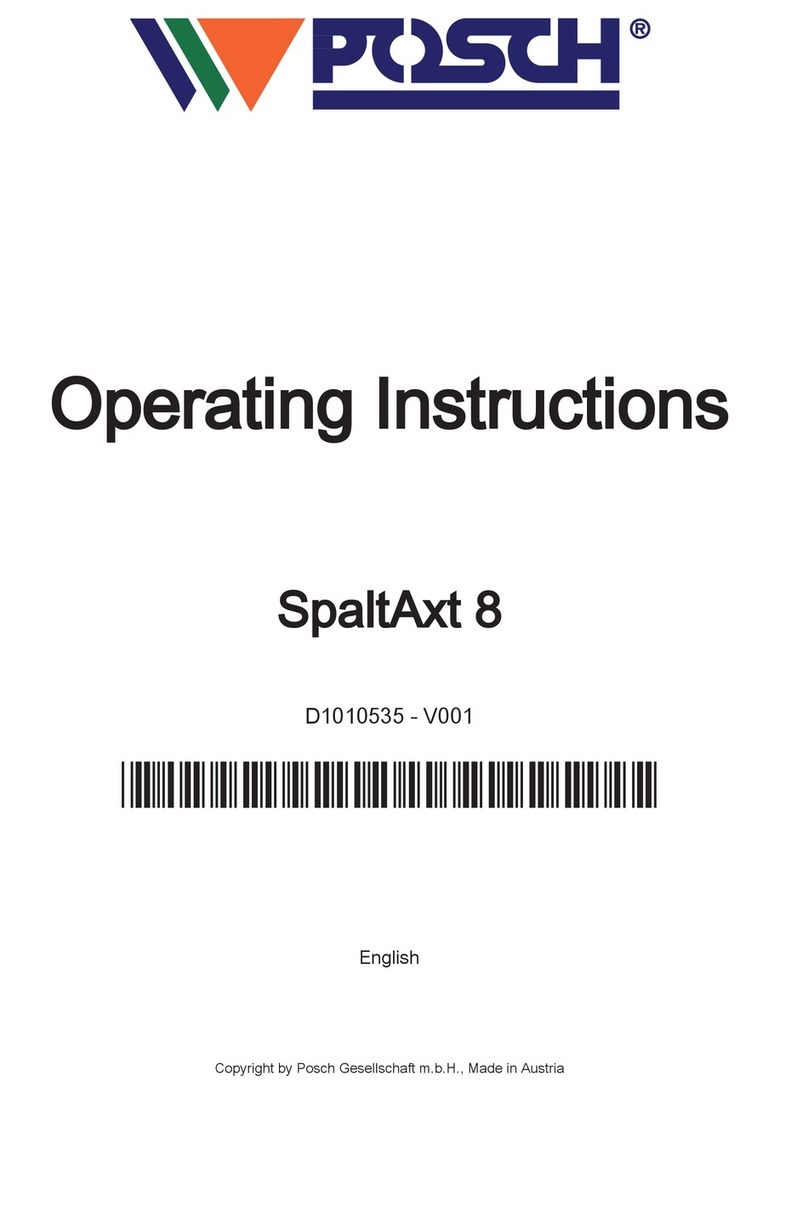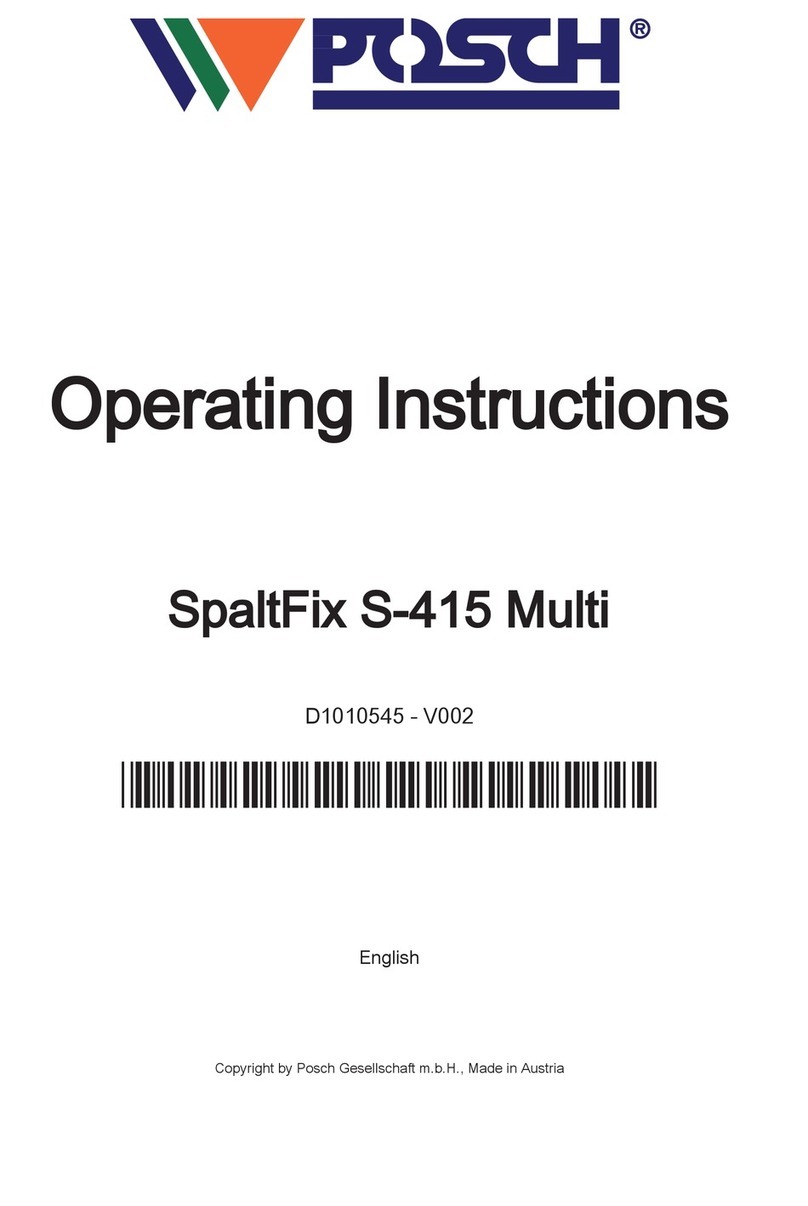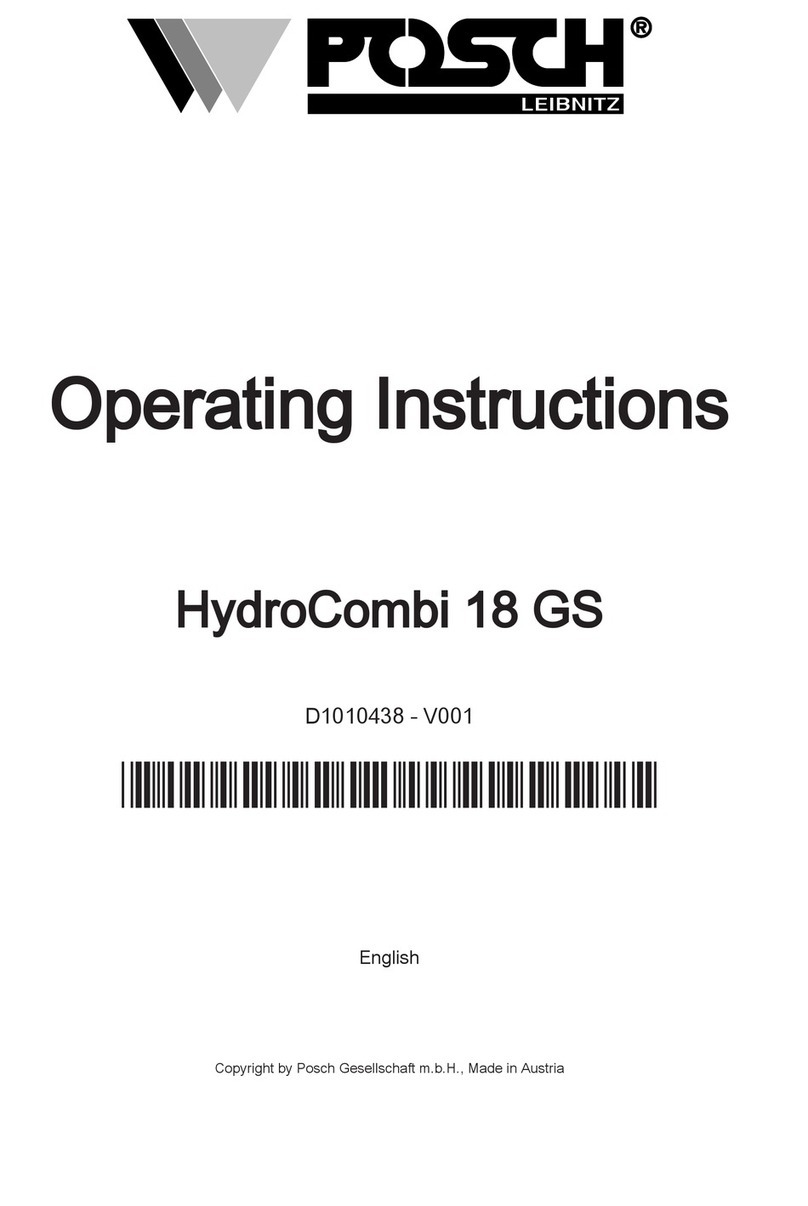
Shut the drive down before removing any jammed pieces of wood.
Wear safety shoes (safety class S3) and close-fitting clothes when working with this device.
Only use the machine outdoors.
▪ Exception: machines operated by electricity.
Wear protective gloves.
The working pressure of the hydraulic system must not exceed 150 bar.
Noise
The workplace-related, A-weighted emission sound pressure level is 98 dB(A), measured
at the operative's ear. The A-weighted, emitted sound power level is 106 dB(A).
In the case of machines with a PTO drive, the noise emissions also depend on the noise of
the tractor.
Ear protection is therefore necessary.
The stated values are emissions values, and thus do not necessarily represent reliable
values for the work area. Although there is a correlation between emission and pollutant
levels, it is not possible to deduce reliably from that whether or not additional precautionary
measures are necessary. Factors that influence the level of pollutants present in the work
area include the individual nature of the work area, other sources of noise, e.g. the number
of machines and other work operations being carried out in the vicinity. Equally, permissible
values for a work area may vary between different countries. However, this information
should enable the user to estimate the dangers and risks more accurately.
Remaining risks
Even if all safety precautions are observed and the machine is used in accordance with the
instructions, some risks still remain:
▪ Touching of revolving parts or tools.
▪ Injury caused by flying logs or log pieces.
▪ Risk of burns if the engine is not properly ventilated.
▪ Hearing loss if ear protection is not worn when working.
▪ Human error (e.g. due to excessive physical exertion, mental strain, etc.)
With every machine, some risks still remain. Therefore you should always be very careful
when working. It is up to the operating personnel to ensure that work is carried out safely.
Proper use
The machine - SmartCut 700 - is designed exclusively for sawing logs with a diameter of
7-20 cm and a length of 15-120 cm.
The log length is infinitely variable within the 15, 18, 20, 25, 27, 30, 33, 35, 40, 45, 50, 52
cm.
The machine may only be used to process firewood.
Only cutting across the grain of the firewood is possible/permitted.
Proper use also includes adherence to the prescribed operating, inspection, maintenance
and servicing conditions and particular attention should also be paid to the safety
instructions contained in the user manual.
2.3
2.4
2.5
Safety information
10






























